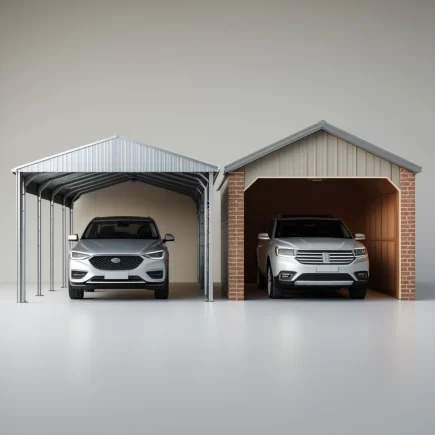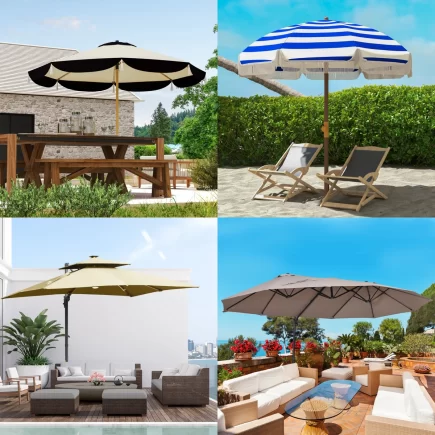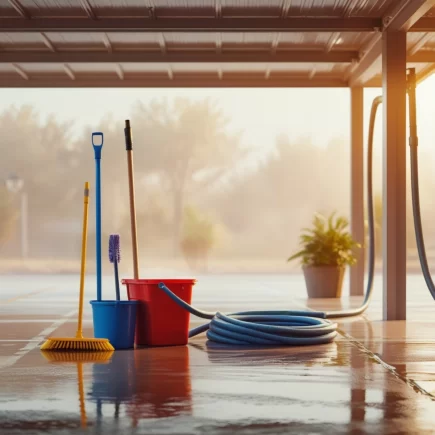Grilling is a beloved tradition for millions of people around the world. Whether you’re hosting a backyard BBQ, tailgating with friends, or grilling for a quiet evening, knowing how to properly start your BBQ grill is essential for a successful cookout. Understanding how to start both gas and charcoal grills will ensure your food is cooked to perfection while providing a safe and enjoyable experience.

In this comprehensive guide, we’ll cover everything from pre-grill preparation to troubleshooting, while also recommending some of our most popular BBQ products to help you get the best results.
Let’s fire up those grills and get cooking!
Pre-Grill Safety: Ensuring a Safe Start
Safety is paramount when grilling. Both gas and charcoal grills require specific safety precautions to ensure you avoid dangerous accidents while also ensuring a smooth grilling experience.
| Preparation Step | Gas Grills | Charcoal Grills |
| Check for Leaks | Apply dish soap and water to gas connections, turn on gas, and look for bubbles. Fix any leaks. | Ensure enough charcoal is available; too little makes heating difficult, too much causes excessive temperatures. |
| Inspect Grill Components | Check burners, ignition system, and hoses for damage or clogs. Clean regularly. | Ensure charcoal grates and vents are clean and free of obstructions. |
| Ventilation | Ensure air vents are open for proper gas combustion. Lack of airflow can cause malfunction. | Ensure vents are open and not blocked. Adjust for consistent airflow. |
| Proper Positioning | Place on a stable, flat surface. Keep away from flammable objects. | Place on a stable, flat surface. Keep away from flammable objects. |
| Lighting Tools | Use an ignition system to light the grill. | Use a chimney starter to light charcoal; avoid lighter fluid. |
How to Start a Gas Grill
Gas grills are favored for their convenience, speed, and ease of use. Here’s a step-by-step guide to starting your gas grill:
Step 1: Open the Lid
Always open the lid before lighting the grill. This allows any accumulated gas to dissipate, reducing the risk of flare-ups or explosions.
Step 2: Check the Propane Tank
Make sure the propane tank is securely connected to the grill, and ensure the valve is fully open. A secure connection is essential for maintaining a steady gas flow.
Step 3: Turn on the Gas
Once the propane tank is connected, turn on the gas by using the burner control knobs. Start with low settings and allow the gas to flow to the burners.
Step 4: Ignite the Grill
Press the ignition button or light the grill manually using a match. If your grill has an automatic ignition system, it will ignite with the push of a button. If your ignition system is faulty, you can manually light it with a match. Be sure the lid is open to prevent gas buildup.
Step 5: Preheat the Grill
Allow the grill to preheat for about 10-15 minutes. Preheating is essential to ensure even cooking and to achieve that perfect sear. Adjust the burners to the desired temperature:
- High Heat: Great for searing meats and vegetables.
- Medium Heat: Ideal for most grilling applications.
- Low Heat: Best for slow cooking and keeping food warm.
Troubleshooting Gas Grill Issues
Occasionally, you might run into issues when using your gas grill. Here are some common problems and how to solve them:
- Grill Won’t Light
Double-check that the propane tank is connected and has enough gas. If the igniter doesn’t work, try lighting the grill manually with a long match.
- Low Flame
If the flame is too low, check the burners for blockages and ensure the gas flow isn’t restricted. Increase the gas flow by turning the burner control knobs higher.
- Flare-Ups
Flare-ups occur when grease or fat drips onto the burners. To prevent this, regularly clean the grill and ensure the grease tray is empty before grilling.
How to Start a Charcoal Grill
Charcoal grilling requires more patience and attention to detail, but it offers a smoky flavor that gas grills can’t replicate. Here’s how to properly start a charcoal grill:
Step 1: Prepare Your Charcoal
Choose the right charcoal for your needs. Lump charcoal burns hotter and faster, while briquettes provide a more consistent, slower burn.
Step 2: Use a Chimney Starter
A chimney starter is the safest and most efficient way to light charcoal. Place some newspaper or fire starters in the bottom of the chimney, add the charcoal on top, and light the paper. After 10-15 minutes, the charcoal will be glowing and ready to be added to the grill.
Step 3: Arrange the Charcoal
Once the charcoal is ready, pour it into your grill. For high-heat grilling, spread the charcoal evenly. For indirect cooking, create a two-zone fire by placing the coals on one side and leaving the other side free for slower cooking.
Step 4: Preheat the Grill
Allow the charcoal to heat up for about 5-10 minutes, and adjust the vents to regulate the temperature. Open the vents to increase heat, and close them to decrease it.
Troubleshooting Charcoal Grill Issues
While charcoal grills provide fantastic flavor, they can also present a few challenges. Here’s how to address common charcoal grill issues:
- Uneven Heat Distribution
Ensure that your coals are evenly distributed across the grill. If you’re cooking with indirect heat, make sure the coals are piled to one side.
- Charcoal Won’t Stay Lit
If your charcoal won’t stay lit, ensure that your chimney starter has ignited fully. Check the air vents to ensure proper airflow, and add more fuel if needed.
- Too Much Smoke
Excessive smoke can be caused by fat drippings onto the coals. Consider using a grill which features adjustable vents to control airflow and reduce smoke.
Choosing the Right BBQ Grill: What to Consider
Choosing the right BBQ grill is an important decision that depends on various factors. Here’s a breakdown of key considerations to help you make an informed choice:
Gas vs. Charcoal Grills
- Gas Grills: If you value convenience and quick setup, a gas grill is the ideal choice. Gas grills heat up quickly and are easy to control. Plus, they’re easier to clean since they don’t produce ash.
- Charcoal Grills: For those who prefer the rich smoky flavor, a charcoal grill is a must. While they require more time to heat up and may produce ash, the flavor they impart is unmatched.
Size and Cooking Area
Consider the space you have available and how much cooking surface you need. Larger grills are great for cooking for large groups, while smaller, portable grills are ideal for smaller gatherings or travel.
Portability
For those who enjoy outdoor adventures like camping or tailgating, look for a portable grill that’s easy to move and store. The Outsunny 28″ Portable Charcoal Barbecue Grill is a great example of a compact, travel-friendly grill.

Temperature Control
Managing the temperature on your grill is crucial for perfect results. Many high-quality grills offer built-in thermometers, adjustable air vents, and multiple burners for even heat distribution. These features allow you to adjust the temperature as needed for searing, slow-cooking, or grilling delicate items.
Durability and Construction
A durable, well-constructed grill will withstand years of outdoor use. Consider grills with sturdy materials such as stainless steel or powder-coated carbon steel for long-lasting performance. High-quality construction not only extends the life of your grill but also ensures better heat retention and an even cooking experience.
Understanding Temperature Control for Perfect Grilling
One of the most important aspects of grilling is temperature control. Whether you’re grilling meat, vegetables, or fish, adjusting the heat is essential for achieving the perfect level of doneness. Here’s a breakdown of how to control temperature for both gas and charcoal grills:
Gas Grill Temperature Control
Gas grills are easier to control in terms of temperature since they use adjustable knobs to regulate the flow of gas. Here’s a basic guide for temperature control:
- High Heat (450℉-550℉): Ideal for searing meats, grilling vegetables, and achieving those perfect grill marks.
- Medium Heat (350℉-450℉): Suitable for cooking thicker cuts of meat like chicken breasts, steaks, and fish fillets.
- Low Heat (250℉-350℉): Perfect for slow-cooking, smoking, and keeping food warm.
Most gas grills, like the Outsunny 52″ Barbecue Grill with Wheels, come equipped with built-in thermometers that make it easy to monitor and control the heat for optimal cooking.

Charcoal Grill Temperature Control
Temperature control on a charcoal grill can be a bit trickier, but with practice, you can master it. Here’s how you can manage temperature on a charcoal grill:
- Air Vents: Charcoal grills have adjustable air vents that control the amount of oxygen reaching the charcoal. The more air, the hotter the grill will get.
- Coal Arrangement: For high-heat cooking, arrange the charcoal in a single layer. For indirect heat or slow cooking, pile the charcoal on one side of the grill to create two zones of heat.
- Lid Position: The position of the lid affects the airflow and temperature. Keep the lid closed for slow cooking and open it for searing.
The Outsunny 30″ Portable Charcoal Barbecue Grill comes with adjustable charcoal racks and side vents, making it easier to control the heat during your cookout.

Cleaning and Maintaining Your BBQ Grill
Proper cleaning and maintenance are essential to ensure your grill stays in top shape for many BBQ seasons to come. Here are some tips for both gas and charcoal grills:
- Clean After Every Use: Whether you’re using a gas or charcoal grill, always clean the grates and remove any food residue or grease. This prevents flare-ups and ensures better flavor during the next cooking session.
- Check for Wear and Tear: Inspect the grill’s components, including the burners, ignition system, and hoses. If you notice any signs of wear, replace them to maintain grill performance.
- Season Your Grates: Before cooking, lightly oil the grates to prevent food from sticking and maintain a smooth, non-stick surface.
For more heavy duty cleaning, consider a product like the Outsunny BBQ Rotisserie Grill which features a detachable windshield for easy cleaning, and multiple height-adjustable grates for better control.

Grilling is more than just cooking; it’s an experience. Whether you’re grilling for friends, family, or yourself, understanding how to start your BBQ grill, manage temperature, and troubleshoot issues will make your grilling experience easier and more enjoyable.
At Aosom, we’re dedicated to providing high-quality BBQ grills that suit every need, from portable charcoal grills to large, multi-burner gas grills. Explore our full range of outdoor grills and accessories at Aosom Outdoor Grills to find the perfect BBQ grill that suits your cooking style and needs.
By following these expert tips and using the right equipment, you’ll be ready to start your BBQ grill with confidence and produce restaurant quality meals every time.
Happy grilling!
FAQS
1. How to start a barbecue for beginners?
Start by selecting the appropriate grill type. Gas for convenience or charcoal for flavor. Ensure the grill is clean, check fuel levels, and follow safe lighting procedures. Always preheat the grill before cooking.
2. How do you light a BBQ grill?
Gas grills can be lit by turning on the gas and using the igniter or a match. Charcoal grills should be lit using a chimney starter or natural fire starters to avoid chemical flavors. Ensure proper ventilation and safety during the lighting process.
3. How do you start a gas grill for beginners?
Open the lid to prevent gas buildup, turn on the propane tank valve, ignite the grill using the built-in igniter or a match, and adjust the burners to the desired heat. Preheat the grill for 10–15 minutes before cooking.
4. What can I use if I don’t have lighter fluid or a chimney starter?
You can use crumpled newspaper or natural fire starters like wax cubes under a pile of charcoal. Light the paper in several spots and allow the flames to catch the coals. Ensure there’s enough airflow to help the fire spread evenly.
5. How do I control the heat on a charcoal grill without knobs?
Adjust the airflow using the top and bottom vents, open them for higher heat and close slightly to reduce temperature. You can also spread the coals out for even heat or pile them to one side for indirect cooking. Managing coal placement is key for temperature control.





















